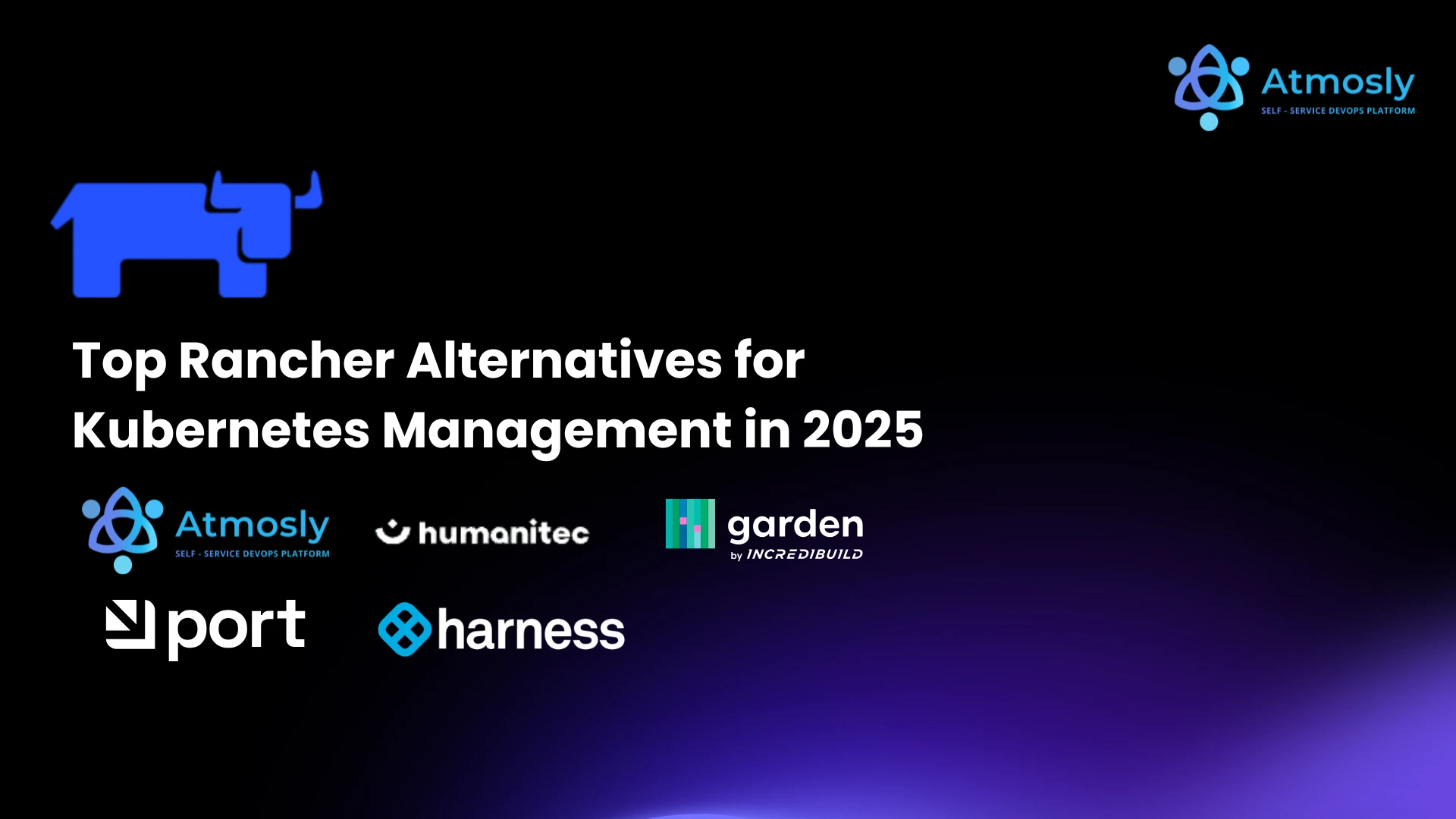Rancher has been a popular Kubernetes management platform, especially for teams looking to simplify cluster provisioning, RBAC, and multi-cloud orchestration. But as Kubernetes adoption matures, engineering teams are seeking tools that go further offering developer self-service, GitOps automation, dynamic environments, and platform engineering capabilities.
If you’re looking for a Rancher alternative that scales with your cloud-native goals and enables more than just cluster visibility, this guide is for you.
Below, we explore the top Rancher alternatives for Kubernetes management in 2025 each with distinct strengths tailored for modern platform and DevOps teams.
Why Consider a Rancher Alternative?
Rancher is strong for cluster lifecycle management and access control, but it shows limitations when teams need:
- GitOps-first deployment workflows
- Self-service environments for developers
- Built-in secrets and policy enforcement
- Service orchestration beyond cluster provisioning
- Platform engineering workflows (like golden paths)
That’s where the following alternatives offer real advantages.
1. Atmosly
Best for: GitOps-native Kubernetes automation, platform teams, and developer self-service.
Atmosly is a cloud-native DevOps automation platform that abstracts Kubernetes complexity behind reusable pipelines, secure environments, and Git-based workflows. It replaces Rancher’s cluster-focused model with a full developer and platform enablement solution.
Key Features:
- GitOps-native Kubernetes deployment and rollback
- Built-in secrets manager with RBAC and policy control
- Ephemeral and persistent environments
- Golden path templates for fast onboarding
- Full Git integration with Kubernetes automation
Why choose Atmosly over Rancher:
- Provides infrastructure + application automation, not just cluster management
- Enables platform engineering and developer self-service
- Built for speed, security, and scalability across environments
2. Humanitec
Best for: Dynamic environment management and infra orchestration across Kubernetes.
Humanitec functions as a control plane for internal developer platforms. It abstracts Kubernetes, services, and environments via APIs allowing platform teams to automate provisioning and expose reusable environments to developers.
Key Features:
- Dynamic workload orchestration
- Declarative environment definitions
- Infra abstraction via APIs for dev teams
- Integrates with Kubernetes, CI tools, and cloud infra
Why choose Humanitec over Rancher:
- Simplifies environment creation beyond the cluster level
- Enables consistent platform engineering practices
- More focused on developer enablement than Rancher’s infra focus
3. Port
Best for: Kubernetes-powered developer portals and GitOps workflow visualization.
Port enables teams to create developer-facing portals that expose Kubernetes workflows in a secure and user-friendly UI. Instead of offering low-level cluster control like Rancher, Port centralizes service metadata, automation triggers, and self-service actions.
Key Features:
- Developer portals with workflow triggers
- Custom blueprints for services and infra
- Access controls and GitOps integrations
- Visualization of K8s resources and changes
Why choose Port over Rancher:
- Offers developer-first UX rather than admin dashboards
- Enables GitOps actions via portal, not CLI
- Empowers platform teams to abstract infra safely
4. Harness
Best for: Enterprise-grade Kubernetes deployment automation with governance and rollback.
Harness provides a unified software delivery platform that includes advanced Kubernetes deployment capabilities, progressive delivery strategies, and observability.
Key Features:
- Canary, blue-green, and rolling deployments for Kubernetes
- Continuous verification and auto rollback
- Cost optimization across clusters and clouds
- Secrets, policy, and audit baked in
Why choose Harness over Rancher:
- Richer deployment strategies and verification layers
- Enterprise-grade governance and compliance
- Automates K8s rollouts with GitOps and policy enforcement
5. Garden
Best for: Kubernetes-native development workflows and automated test environments.
Garden accelerates the dev and test loop for teams building microservices on Kubernetes. It focuses on test orchestration, service dependencies, and local-first development.
Key Features:
- Infrastructure, services, and tests defined as code
- Dependency-aware pipelines across Kubernetes clusters
- Smart caching and hot reloading
- Cluster and local development orchestration
Why choose Garden over Rancher:
- Tailored for developers, not infra admins
- Focuses on test/dev workflows inside Kubernetes
- Simplifies service orchestration, not just cluster ops
Final Comparison
Tool | Ideal For |
| Atmosly | GitOps CI/CD, scalable infra automation, developer enablement |
| Humanitec | Platform teams managing environments via APIs |
| Port | Visual developer portals with GitOps and infra metadata |
| Harness | Secure K8s delivery with progressive deployment patterns |
| Garden | Dev/test workflows in Kubernetes environments |
Conclusion
Rancher paved the way for easier Kubernetes management but today’s DevOps and platform teams need more than just cluster control.
Whether you’re building a developer platform, enforcing GitOps standards, or streamlining service delivery tools like Atmosly, Humanitec, Port, Harness, and Garden offer powerful, future-ready alternatives.
Ready to Go Beyond Rancher?
Atmosly empowers platform teams and developers with GitOps-native Kubernetes automation, secure environments, and reusable workflows all in one unified platform.






